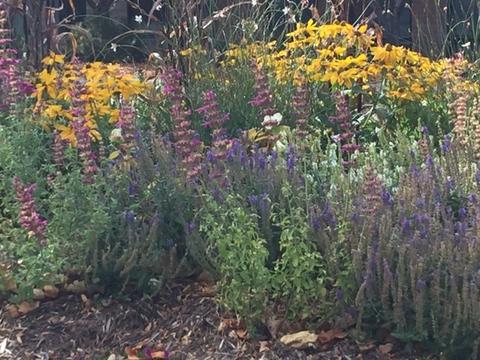Activities Beneficial to Pollinators
Provide habitat for pollinators
Urbanization, loss of undisturbed natural areas and crop monocultures are partially to blame for the crisis facing pollinators. What can you do?
Support native pollinators by providing habitat and forage.
Utilizing the urban landscape to help solve the pollinator crisis isone of the most powerful ways that individuals can make a difference.
A landscape that is made up predominately of turfgrass and non-flowering plants does not provide pollinators with food and forage.
Compared to a landscape made up of a variety of plants with a large number of flowering shrubs, trees, annual and perennial flowers that provides a diversity of food and forage for pollinators of all types and sizes.
This garden is located in a parking lot at the Colorado Department of Agriculture offices in Broomfield. The garden attracts a wide variety of pollinatorsby providing forage through plants that bloom in the spring, summer, and fall.
How you can make a difference:
- Plant a wide variety of blooming trees, shrubs, annuals and perennials in your yard. Sonya Anderson with the Denver Botanic Gardens explains how, with Plant Select plants, inPlants, Select and Pollinators; or find a list ofLow Water Native Plants for PollinatorsandAttracting Butterflies to the Garden.
- Advocate for the planting and seeding of plants that attract pollinators in parks, golfcourse roughs, open-space areas and along roadways.
- Avoid applying pesticides to plants in bloom. See the pesticide and pollinator safety page for more information.
How the State of Colorado is making a difference:
I76 designated as the Colorado Pollinator Highway
Need more information and education on the appropriate plants for Colorado landscapes and Colorado native plants?
Colorado State University Extension Horticulture and Landscape Programs
Colorado Native Plant SocietyBecome a Native Plant Master

